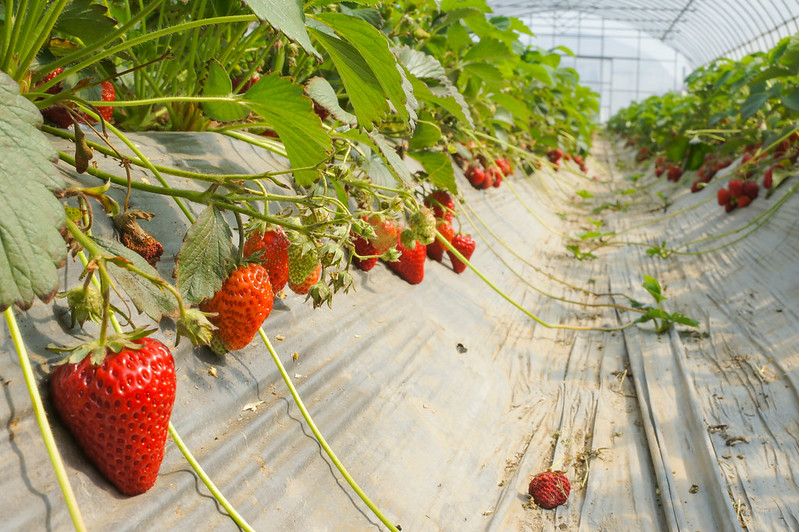A research group from Iran’s University of Tehran has conducted a feasibility study for the use of PV systems in commercial hydroponic greenhouses across the country.
Their work consisted of calculating the total energy input of a strawberry greenhouse in a case study that currently runs on natural gas and electricity, and then simulating the area required by a PV system to completely replace grid electricity.
“This study aims to assess the energy and environmental aspects, as well as the practicality of employing photovoltaic cells to meet the energy requirements of a commercial hydroponic greenhouse in Alborz province,” said the scientists. “Data was gathered from a 3,000 m2 strawberry hydroponic greenhouse through on-site visits, surveys, and measurements.”
Alborz is located in northern Iran and has an average annual temperature of 14.1 C and annual rainfall of 252 mm. Based on official data from 2000 to 2021, the average daily total radiation is about 10.9 MJ m2, reaching a high of about 29 MJ m2 in June and a low of about 9 MJ m2 in December.
In their calculation of energy input, the researchers included parameters such as human labor, equipment, and fertilizers, along with natural gas and electricity usage. Based on that, they found that throughout the year the total energy input was 228,000 MJ per hectare.
“The results indicated that the input energy consumption is highest for natural gas, which accounts for 68% of the total input energy. The electricity energy percentage was about 20% of the consumed energy,” they said. “The total electricity consumption in the studied greenhouse is 44,250 kWh (159,300 MJ).”
For their analysis, the academics sought to replace only the electricity from the grid, mainly used for pumping water and lighting. In their software simulation, they designed a south-oriented PV system installed on the greenhouse roof, with panels installed at a slope of 35 degrees. The reflectivity coefficient of the earth was assumed to be 0.3.
“The photovoltaic system was considered to be grid-connected, which has a maximum efficiency of the panel equal to 18% and the efficiency of the inverter and distribution cables is 96%,” the group further explained.
“The results showed that 7,736 MJ of solar energy can be received annually per square meter of the panel surface. Therefore, approximately 120 m2 of panel surface is needed to generate this amount of electricity. This panel surface accounts for roughly 4% of the greenhouse roof area and can supply renewable solar electricity to the greenhouse without significantly reducing the level of illumination for the plants inside,” they found.
Calculating the impact of replacing grid-connected electricity with locally produced PV power, the group also found that it reduced the adverse environmental effects of non-renewable energy sources. They found that it decreased damage to the human health index by 7% and damage to the ecosystem index by 15%.
Their findings were presented in “Feasibility study of using photovoltaic cells for a commercial hydroponic greenhouse: Energy analysis and life cycle assessment,” published on e-Prime – Advances in Electrical Engineering, Electronics and Energy.
This content is protected by copyright and may not be reused. If you want to cooperate with us and would like to reuse some of our content, please contact: editors@pv-magazine.com.



2 comments
By submitting this form you agree to pv magazine using your data for the purposes of publishing your comment.
Your personal data will only be disclosed or otherwise transmitted to third parties for the purposes of spam filtering or if this is necessary for technical maintenance of the website. Any other transfer to third parties will not take place unless this is justified on the basis of applicable data protection regulations or if pv magazine is legally obliged to do so.
You may revoke this consent at any time with effect for the future, in which case your personal data will be deleted immediately. Otherwise, your data will be deleted if pv magazine has processed your request or the purpose of data storage is fulfilled.
Further information on data privacy can be found in our Data Protection Policy.